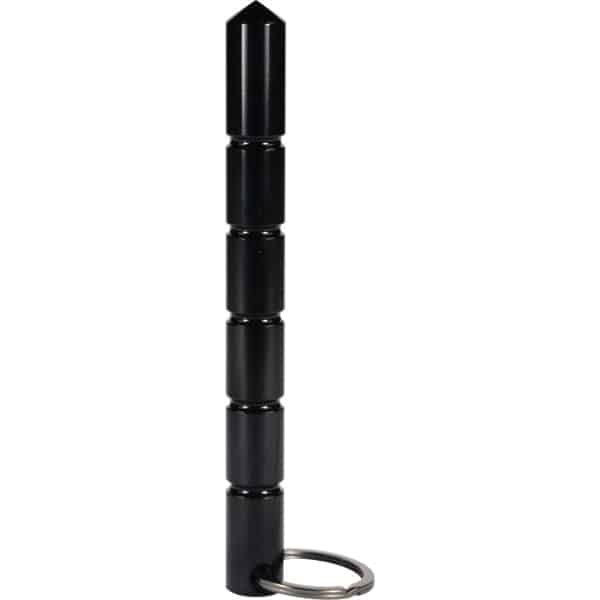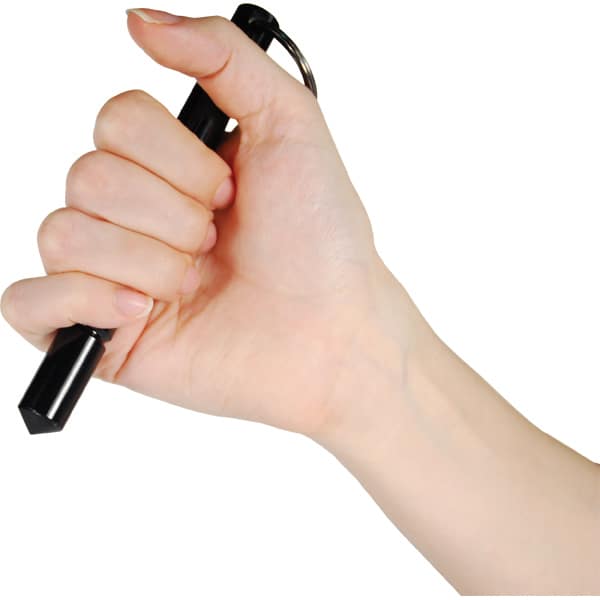
Brainstorm Security Shop

For Orders Over $99

On Any Of Our Products

Details On Refund Page

Have you ever considered carrying a kubaton for self-defense? This compact, easy-to-carry tool could be a crucial addition to your personal safety toolkit. Originating from Japan, the kubaton is designed to enhance your self-defense capabilities without requiring extensive martial arts training. You might be wondering about kubatons legality, or perhaps how to use one effectively without causing undue harm. The effectiveness of a kubaton self defense lies in its simplicity and the strategic advantage it provides in stressful situations. Let’s explore some key techniques and considerations like the kubaton keychain that could significantly impact your ability to defend yourself when it matters most.
A kubaton is a small, portable kubaton self-defense tool that easily fits into the palm of your hand or can be attached to your keychain. Originating from Japan, its history is deeply rooted in martial arts, specifically developed for police officers in the 1960s. The kubaton was designed by Takayuki Kubota, aiming to provide non-lethal force in restraining suspects.
Over time, it’s evolved into a popular self-defense instrument used worldwide.
Typically, kubatons are made from durable materials like aluminum, plastic, or steel. These materials ensure they’re lightweight yet strong enough to withstand impact. You’ll find them in various lengths, usually around five to six inches, making them discreet yet effective when you need them.
The simplicity of a kubaton is what makes it particularly appealing. There are no moving parts, nothing to reload or malfunction. You just need to grip it firmly and use it to jab or press against an assailant.
Its effectiveness lies in its ability to target sensitive points on an attacker’s body, such as pressure points or soft tissues, which can help you escape from dangerous situations.
Understanding the legal implications of carrying a kubaton is crucial before you decide to add one to your keychain. Laws vary significantly from one region to another, so you’ll need to dive into local regulations to avoid any legal troubles. In some places, a kubaton is classified under self-defense laws, while in others, it might fall under specific weapon classifications that could limit its possession and use.
You should check whether carrying a kubaton requires a permit or if there are any restrictions on its size and material. Remember, even if it’s legal to carry, using a kubaton in a confrontation is governed by the same principles that apply to self-defense. You’re typically only justified in employing such a tool when you’re facing an immediate and unavoidable threat to your safety.
Moreover, the context in which you use the kubaton can heavily influence legal outcomes. Using it against an unarmed person might be seen as disproportionate force in many jurisdictions, potentially leading to criminal charges or civil liabilities.
Always ensure you’re informed about how self-defense laws apply to the use of non-lethal weapons in your area to stay on the right side of the law.
Now that you’re familiar with the legal aspects of carrying a kubaton, let’s delve into basic kubaton techniques that can effectively enhance your self-defense capabilities. Mastering these techniques can make a significant difference in your personal safety and confidence.
Here’s how you can begin to integrate kubatons into your self-defense strategies:
These foundational techniques aren’t just maneuvers; they’re your keys to feeling safer and more empowered in threatening situations.
To master the kubaton techniques outlined earlier, you’ll need to practice regularly. Setting up a consistent routine is crucial.
Start by gathering the essential gear, which includes your kubaton, comfortable clothing, and protective equipment. Safety is paramount, so make sure your practice area is spacious and free of hazards.
Begin with the basic moves you’ve learned. Execute each strike, block, and maneuver slowly at first, focusing on your form and technique. As you grow more confident, increase your speed and force. Remember, the goal is to make these movements second nature.
Incorporate safety drills into your sessions. These are scenarios that simulate real-life encounters but in a controlled environment. Practice your reaction time and accuracy.
Have a partner or a coach work with you to provide feedback and create more realistic training conditions. They can help adjust your grip, stance, and execution.
Lastly, keep a practice journal. Note what you’ve worked on, improvements, and areas needing more attention. Reviewing this regularly can provide insights and keep your motivation high.
Persistence and mindful practice are your keys to becoming proficient with a kubaton.

After honing your skills through regular practice, you’re better prepared to apply kubaton techniques in real situations.
Whether you’re walking through a poorly lit parking lot or navigating crowded public transport, the kubaton is your silent ally for personal safety.
Here are four tips to maximize its effectiveness in self-defense scenarios:
Yes, if you’re not careful with kubaton techniques, you can break bones or cause permanent injury. It’s crucial you learn proper usage to minimize injury risks to yourself and others.
A kubaton’s effectiveness hinges on your skill with self-defense techniques, requiring close contact to incapacitate an assailant. In contrast, pepper spray allows you to maintain distance, offering a safer, less skill-dependent defense option.
For the best balance and ease in handling, you’ll want your kubaton to be about 5 to 6 inches long and weigh a few ounces. Choose durable materials and master the techniques for effectiveness.
You’ll find there aren’t universal age restrictions for carrying a kubaton, but local kubaton laws vary. Always check your area’s regulations and consider self-defense training to effectively and responsibly use it.
You can’t take kubatons on airplanes or through airport security due to their classification as weapons. Check the latest TSA guidelines to ensure you’re compliant with kubaton legality before heading to the airport.
Now that you know what a kubaton is and how to use it, remember to check local laws before carrying one. Regular practice is key to mastering the techniques that could one day save your life. Keep your kubaton accessible and stay aware of your surroundings. With these tips and consistent training, you’ll boost your confidence and readiness to defend yourself effectively in any threatening situation. Stay safe, and empower yourself with the skills you need.
Brainstorm Security Shop
1867 Caravan Trail
Ste 105
Jacksonville, FL 32216
Call us toll free: (800) 859-5566